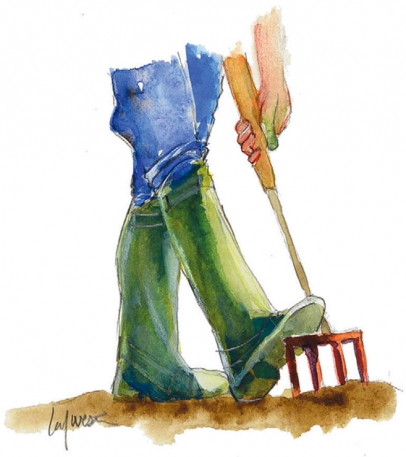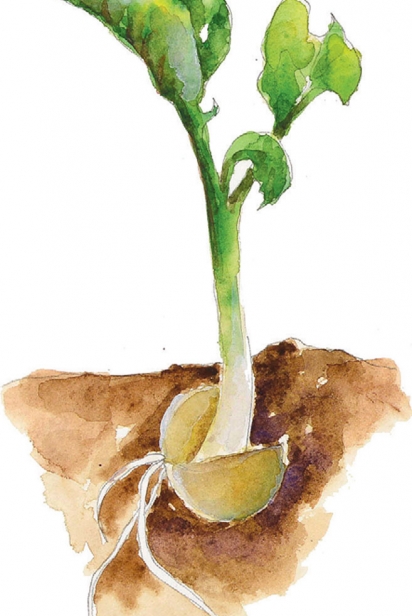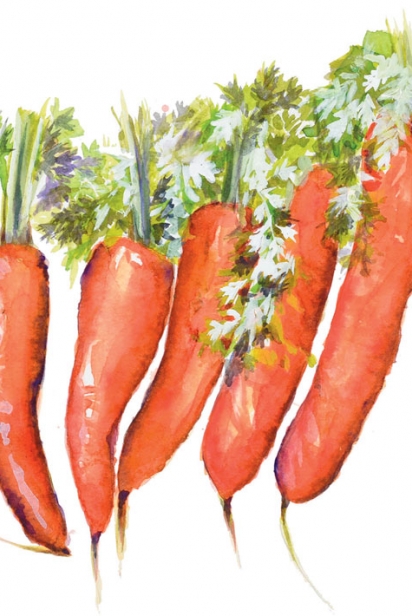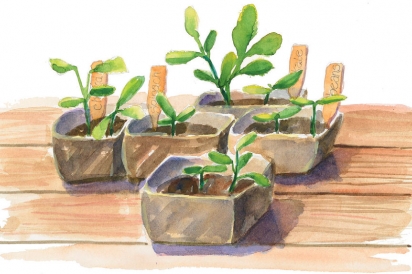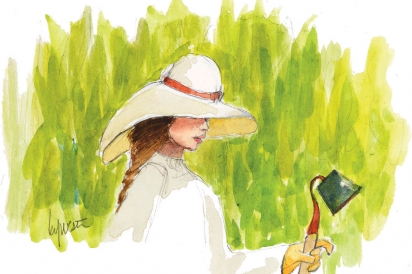How Does Your Garden Grow?
Spring planting advice from a local farmer
For gardeners old and new, the first sunny days of spring incite an industrious fervor that can border on insanity. If ever there was a way to bite off more than you can chew, it’s planting a garden after a long winter’s amnesia. Weeds? What are those? Canning? It’s heaven on Earth!
So before you rip up half your lawn and start buying seeds, and your paychecks begin to disappear into mountains of plant starts and bags of compost, keep these tips in mind to help your garden grow.
What to Grow
Grow what you like to eat. It seems simple, but many folks plant what they think they’re supposed to plant rather than what they actually want to eat.
If you’re short on space, consider skipping things that are inexpensive to buy from local producers and/or that take up tons of space (like cabbage, onions and potatoes). Instead, focus on stuff that’s either expensive (like kale, greens and herbs) or that tastes infinitely better when homegrown (like tomatoes).
When to Plant
Gardeners classify crops into cool- and warm-season. Cool-season crops can handle frost and are generally planted in the spring. Warm-season crops can’t be planted outside until after the danger of frost has passed.
Some crops are “direct-seeded”—which means seeds are planted right into the ground—while others are generally started indoors and transplanted outside later.
Direct Seeding Tips
1. Don’t seed too deeply. Plant small seeds no more than half-an-inch deep.
2. Keep the ground moist until your seeds germinate. Be patient—carrots, especially, take a long time to come up (sometimes three weeks).
3. Be sure to thin. Root crops like radishes need space to grow. Be a ruthless thinner, or you’ll end up with lots of leafy tops and no roots. Seriously, thin like the dickens! Don’t feel bad!
Indoor Starting Tips
1. Light is crucial. It’s the biggest reason home gardeners end up with spindly plants. You can use a regular shop light (no fancy bulbs needed). Suspend it just a few inches above your seedlings and raise the light up as they grow. A window (even a south-facing one) is generally not enough light to avoid leggy seedlings. Keep your light on for 14 hours a day.
2. Use potting soil (not regular soil). It is sterile and full of compost to help your plants grow strong.
3. Keep seedlings moist, but cut back water if you notice mold growing on the surface.
Transplanting Tips
1. Harden seedlings off by setting them outside for a few hours a day for a few days before you transplant.
2. Make sure to water your transplants. Transplanting is stressful on your plants, so make sure they have plenty of water in their new homes or they will surely perish with their tiny little roots.
3. Make a small depression in the soil around the plants as you plant, like a moat, and then fill it up with water to get plenty of water to the tiny roots of your plants. Water deeply and often for at least two weeks to help them root deeply. You can also add compost to help feed them.
Planting Timeline
The following dates are for the Treasure Valley. For other areas, look up your last frost date and work backwards from there. Some crops are listed for both direct- seeding and starting indoors because they work well both ways.
February: Start Spring Crops Indoors
Start these crops indoors in February, or one month before the ground thaws, then transplant them outside in the spring (March to May): Brassicas like broccoli, kale, collards, Brussels sprouts, cauliflower, kohlrabi and cabbage; alliums like onions, shallots and leeks; head lettuces; chard; mustards; parsley; perennial flowers; celery; fennel (transplant April to May).
March/April: Direct Seed Spring Crops
Direct seed these crops as soon as the ground can be worked in the spring: peas; radishes; carrots; beets; turnips; rutabagas, parsnips and other roots; potatoes (protect the tops from frost); scallions; onion sets; dill; greens like spinach, arugula and mustards; lettuce; fava beans, cilantro; and chard (don’t plant until April or later).
March/April: Start Summer Crops Indoors
Start these crops indoors in March/April, or six to eight weeks before the last frost and transplant them after the danger of frost has passed in late May or early June: tomatoes, eggplant, peppers, basil (start four weeks ahead), tomatillos, ground cherries and long-season annual flowers.
Late May/Early June: Direct Seed Summer Crops
Direct seed these crops after the danger of frost has passed in late May or early June: summer and winter squash, basil, pole and bush beans, melons, cucumbers, corn, soybeans, sweet potatoes, calendula and short-season annual flowers.


